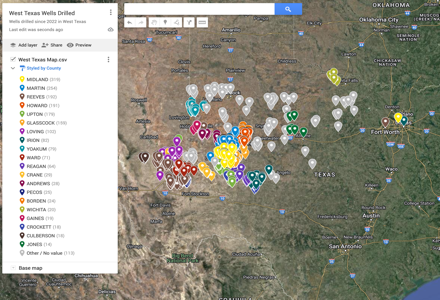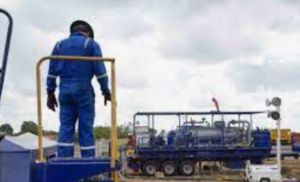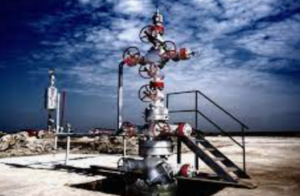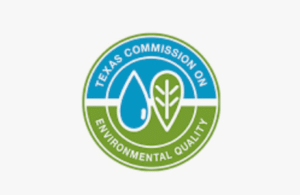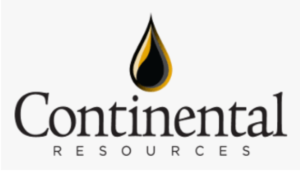What is the West Texas Oil & Gas?
West Texas Oil & Gas is an oil-and-gas-producing area that makes up the majority of the Permian Basin that covers an area approximately 250 miles wide and 300 miles long and is composed of more than 7,000 fields.

West Texas Oil & Gas Permit Download

West Texas Wells Drilles 2024
List of wells drilled in West Texas Q1 2024
West Texas Oil & Gas Operator List
List of Oil & Gas Operators that have drilled wells in West Texas last 30 days.
West Texas Oil & Gas Wells Drilled
List of wells drilled in West Texas last 12 months
West Texas Oil & Gas Drilling Rigs
Active drilling rigs last 30 days in West Texas
West Texas Oil & Gas New Wells Permits
New Well Permits West Texas Last 12 Months
Who are the top 10 Oil & Companies in the West Texas
The list below is a summary of the top 10 Oil & Gas Producers in West Texas by wells drilled in 2023.
1/ Pioneer Natural Resources ranks #1 in wells drilled in 2023 with 592 wells drilled in the West Texas
2/ Diamondback Energy ranks #2 in wells drilled in 2023 with 393 wells drilled in the West Texas
3/ OXY USA Inc. ranks #3 in wells drilled in 2023 with 337 wells drilled in the West Texas
4/ Endeavor Energy ranks #4 in wells drilled in 2023 with 342 wells drilled in the West Texas
5/ Ovintiv USA ranks #5 in wells drilled in 2023 with 200 wells drilled in the West Texas
6/ Conocophillips ranks #6 in wells drilled in 2023 with 199 wells drilled in the West Texas
7/ XTO Energy ranks #7 in wells drilled in 2023 with 198 wells drilled in the West Texas
8/ Chevron ranks #8 in wells drilled in 2023 with 191 wells drilled in the West Texas
9/ Crownquest ranks #9 in wells drilled in 2023 with 186 wells drilled in the West Texas
10/ Vital Energy ranks #10 in wells drilled in 2023 with 130 wells drilled in the West Texas
West Texas Map of Wells Drilled Since 2022 (click to access)
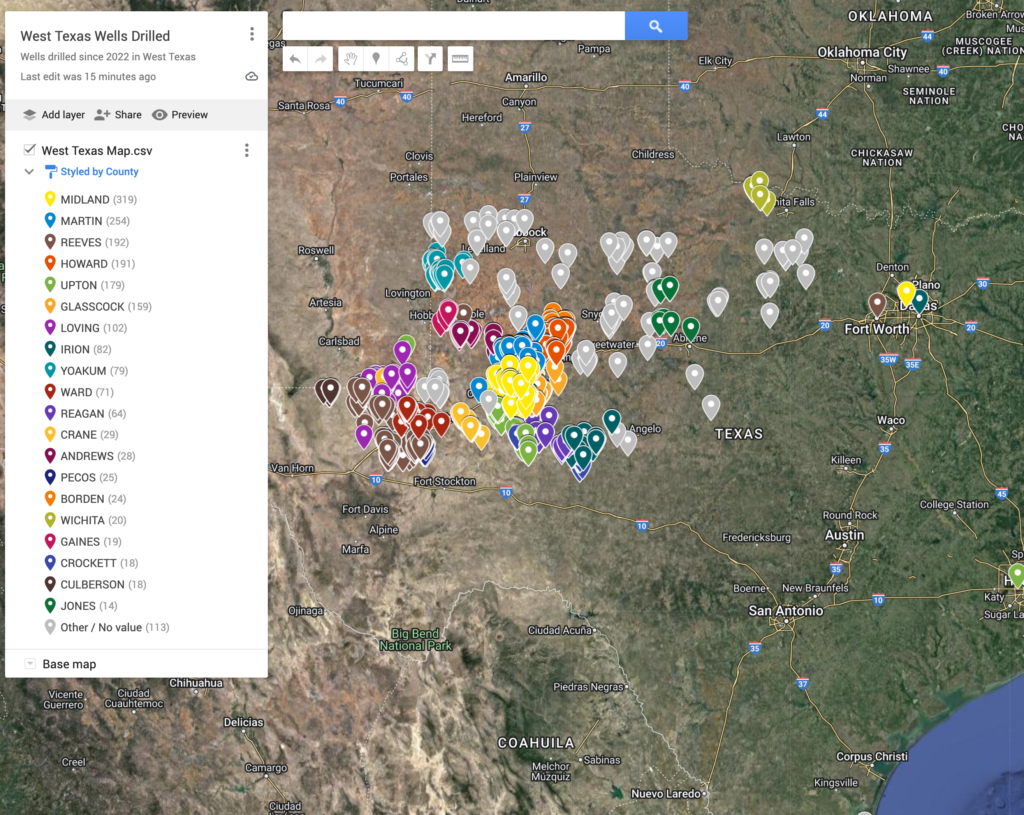
West Texas Oil & Gas Overview
West Texas, particularly the Permian Basin, is one of the most significant regions for oil and gas production in the United States. Here are some key points about the oil and gas industry in West Texas:
- Permian Basin: The Permian Basin, located primarily in West Texas but also extending into southeastern New Mexico, is one of the largest and most prolific oil and gas basins in the world. It has been a major center for oil and gas production since the early 20th century.
- Shale Revolution: The Permian Basin has been at the forefront of the shale revolution, which involves the use of advanced drilling techniques such as horizontal drilling and hydraulic fracturing (fracking) to extract oil and gas from shale formations. These techniques have unlocked vast reserves of oil and natural gas in the region.
- Production Growth: In recent years, the Permian Basin has experienced exponential growth in oil and gas production, making it the leading oil-producing region in the United States. The basin’s production levels have had a significant impact on global oil markets.
- Economic Impact: The oil and gas industry in West Texas, particularly in the Permian Basin, has had a profound economic impact, driving job creation, investment, and economic growth in the region. The industry supports various sectors, including oilfield services, manufacturing, and transportation.
- Infrastructure Development: The surge in oil and gas production in West Texas has led to increased infrastructure development, including pipelines, processing facilities, and export terminals, to accommodate the growing volumes of oil and gas being produced.
- Challenges: Despite its economic benefits, the rapid growth of the oil and gas industry in West Texas has also brought challenges, including concerns about environmental impacts, water usage, infrastructure constraints, and community development.
- Regulation: Oil and gas activities in West Texas are regulated by state agencies such as the Texas Railroad Commission, which oversees drilling, production, and environmental compliance.
Overall, West Texas, particularly the Permian Basin, plays a crucial role in the domestic and global energy landscape, and its oil and gas industry is a significant driver of economic activity in the region and beyond.
West Texas Oil & Gas Producing Counties
MARTIN, MIDLAND, REEVES, HOWARD, LOVING, UPTON, GLASSCOCK, ANDREWS, WARD, REAGAN, CRANE, CULBERSON, WINKLER, IRION, YOAKUM, PECOS, ECTOR, FISHER, SCURRY, BORDEN, JONES, DAWSON, GAINES, WICHITA, JACK, SHACKELFORD, CROCKETT, YOUNG, STONEWALL, HOCKLEY, MITCHELL, DICKENS, GARZA, NOLAN, KING, MONTAGUE, COLEMAN, COCHRAN, LUBBOCK, EASTLAND, KENT, KENEDY, SCHLEICHER, STEPHENS, MCCULLOCH, TERRY, TOM GREEN, LAMB
n West Texas, especially within the Permian Basin, several counties stand out for their high levels of oil and gas production. Here are some of the top counties in terms of production:
- Midland County – Often at the top of the list, Midland County is a central hub for oil and gas operations in the Permian Basin. The city of Midland itself serves as a key economic center for the energy industry.
- Reeves County – Known for some of the most prolific oil wells in the Permian Basin, Reeves County has seen significant development in recent years, especially in shale oil and gas extraction.
- Loving County – Despite its small size and population, Loving County is one of the highest producing oil counties in Texas, thanks to the density of its oil-rich shale formations.
- Martin County – Martin County has also been a top producer, with many companies operating in the area due to its favorable geology for oil extraction.
- Howard County – Located in the heart of the Permian Basin, Howard County features extensive oil and gas activity with substantial contributions to overall production in the region.
These counties are central to the oil and gas industry in West Texas and the broader Permian Basin area, contributing significantly to both state and national energy outputs. The industry in these areas is characterized by both rapid growth and the challenges of managing environmental impacts and economic fluctuations.
Energy News

